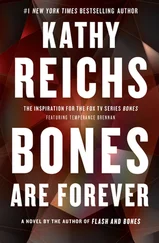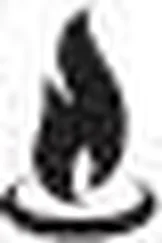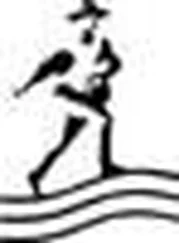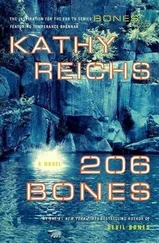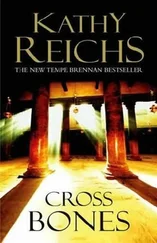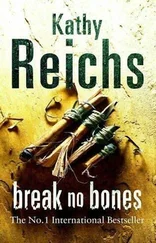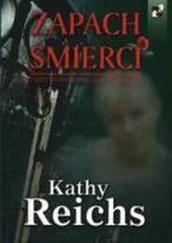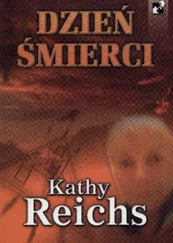Burkhead observed hunched in the shadows of the easternmost corner. Slidell watched from the doorway, hanky to mouth.
Masking, I squatted sideways and began to lever.
The nails lifted easily.
SOUTHERNERS DON’T ATTEND WAKES. WE ATTEND VIEWINGS. Makes sense to me. Drained of blood, perfumed, and injected with wax, a corpse is never going to sit up and stretch. But it is laid out for one final inspection.
To facilitate that last, pre-eternity peek, casket lids are designed like double Dutch doors. Finney and his gal pal had taken advantage of that feature, prying open only the hinged upper half.
OK for a snatch and run in the night. I needed full-body access.
Thanks to the vandalism and to natural deterioration, the top of Susan’s coffin had collapsed into a concavity running the length of the box. Experience told me the cover would have to be lifted in segments.
After prying loose Burkhead’s makeshift repair strips, I hacked through corrosion sealing the edges of the lid. Then, like Finney, I laid to with the crowbar.
Burkhead and Slidell helped, displacing decayed wood and metal to unoccupied inches of floor space. Odor oozed up around us, a blend of mildew and rot. I felt my skin prickle, the hairs rise along my neck and arms.
An hour later the casket was open.
The remains were concealed by a jumble of velvet padding and draping, all stained and coated with a white, lichenlike substance.
After shooting photos, I gloved, uneasy about Hewlett’s assessment that nothing in the coffin had been violated but the head. If that was true, what of the femora I’d found in Cuervo’s cauldron? I kept my concerns to myself.
It took only minutes to disentangle and remove the funerary bedding covering the upper half of the body. Slidell and Burkhead observed, offering comments now and then.
Susan Redmon had been buried in what was probably a blue silk gown. The faded cloth now wrapped her rib cage and arm bones like dried paper toweling. Hair clung to the cushion that had cradled her head, an embalmer’s eye cap and three incisors visible among the long, black strands.
That was it for the pillow. No head. No jaw.
My eyes slid to Slidell. He gave a thumbs-up.
I collected a sample of hair, then the incisors.
“Those teeth?” Slidell asked.
I nodded.
“Do you have dental records?” Burkhead asked.
“No. But I can try fitting these three into the sockets, and comparing them to the molars and premolars still in place in the jaw and skull.”
Teeth and hair bagged, I continued my visual examination.
Susan’s gown was ripped down the bodice. Through the tear I could see a collapsed rib cage overlying thoracic vertebrae. Three cervical vertebrae lay scattered above the gown’s yellowed lace collar. Four others nestled between the soiled padding and the edge of the pillow.
Gingerly, I peeled away coffin lining until the lower body was also exposed.
The wrist ends of the radii and ulnae poked from both sleeve cuffs. Hand bones lay tangled among the folds of the skirt and along the right side of the rib cage.
The gown was ankle-length, and tightly adhered to the leg bones. The ankle ends of the tibiae and fibulae protruded from the hemline, the foot bones below, in rough anatomical alignment.
“Everything’s brown like the Greenleaf skull,” Slidell said.
“Yes,” I agreed. The skeleton had darkened to the color of strong tea.
“What are those?” Slidell jabbed a finger at the scattered hand bones.
“Displaced carpals, metacarpals, and phalanges. She was probably buried with her hands positioned on her chest or abdomen.”
As I snipped and tugged rotting fabric, I imagined Donna thrusting a hand into the covered lower half of the coffin, fingers groping blindly, grabbing, tearing, amped on adrenaline.
“Overlapping hands is a standard pose. Either on the belly or the chest. Often the departed are interred holding something dear.”
Burkhead was talking to be talking. Neither Slidell nor I was listening. We were focused on the fragile silk covering Susan’s legs.
Two last snips with the scissors, then I tugged free the remnants of the skirt.
One lonely kneecap lay between Susan’s pelvis and her knees.
“So Hewlett screwed up,” Slidell said.
“Both femora are gone.” Relief was evident in my voice.
“I’m going to fry that pissant Finney. And his sicko girlfriend. We done here?”
“No, we are not done here,” I snapped.
“What now?” Slidell’s thoughts had already turned to tracking Donna Scott.
“Now I check for consistency between this skeleton and the skull and leg bones found in Cuervo’s cauldron.”
“I gotta make a call.” Pivoting, Slidell strode from the tomb. In seconds, his voice floated in from outside.
Folding back the torn edges of the bodice, I lifted the right clavicle, brushed and inspected its medial end. The growth cap was partially fused, suggesting a young adult with a minimum age at death of sixteen.
I lifted and inspected the left clavicle. Same condition.
I was scribbling notes on my case form when Slidell reappeared.
“Asked Rinaldi about a query I popped through to LAPD before heading over here. About Donna Scott and her daddy, Birch.”
“I thought Rinaldi was canvassing in NoDa.”
“Chicken hawks went to ground. He’s at headquarters, plans to head back out when they resurface after dark.”
I resumed my analysis by removing and inspecting the right pelvic half. The shape was typically female. The pubic symphysis had deep horizontal ridges and furrows, and a slender crest of bone was in the process of fusing to the upper edge of the hip blade.
I made notes on my form, then picked up the left pelvic half. Adipocere, a crumbly, soaplike substance, clung to its borders and symphyseal face. Ten minutes of cleaning revealed characteristics identical to those on the right.
More notes.
I was examining the rib ends when Slidell’s phone shattered the silence. Yanking the device from his hip, he shot outside. As before, his words were lost, but his tone carried in through the open door.
Slidell’s second conversation was longer than his first. I was repositioning a vertebra when he reentered the tomb.
“LAPD got back to Rinaldi.”
“That was quick,” I said.
“Ain’t computers grand?”
Burkhead had gone motionless. I could tell he was listening.
“Birch Alexander Scott purchased a home in Long Beach in February of 2001, moved in that summer with his wife, Annabelle, and two daughters, Donna and Tracy.”
“That squares with Finney’s story,” I said.
“Things didn’t go exactly as the old man intended. Two years after relocating, the guy was taken out by a massive coronary. Wife’s still enjoying the house.”
“What about Donna?”
“Sounds flaky as ever. Enrolled in the School of Cinematic Arts at the University of Southern California in 2002.” Slidell put a sneer into the program title. “Dropped out in 2004 to marry Herb Rosenberg, age forty-seven. Ever hear of him?”
I shook my head.
“Guy’s some bigwig freelance producer. Marriage lasted two years. Donna Scott-Rosenberg now lives in Santa Monica. Since July she’s been working as a researcher for a TV series.”
“Did Rinaldi get a phone number?”
“Oh, yeah.” Slidell waggled his cell and disappeared again.
“Who is Donna Scott?” Burkhead asked.
“She may have been involved in the vandalism.”
One by one, I assessed the maturity of the long bones.
Neck and shoulders screaming, I finally sat back on my heels.
Clavicles. Pelves. Ribs. Long bones. Every indicator suggested death between the ages of fifteen and eighteen.
Читать дальше


